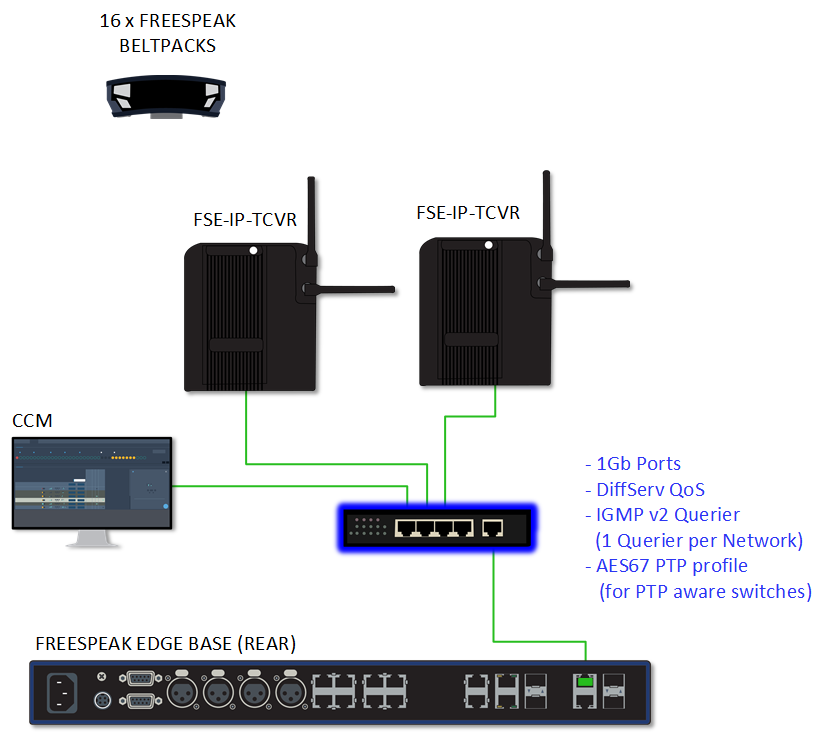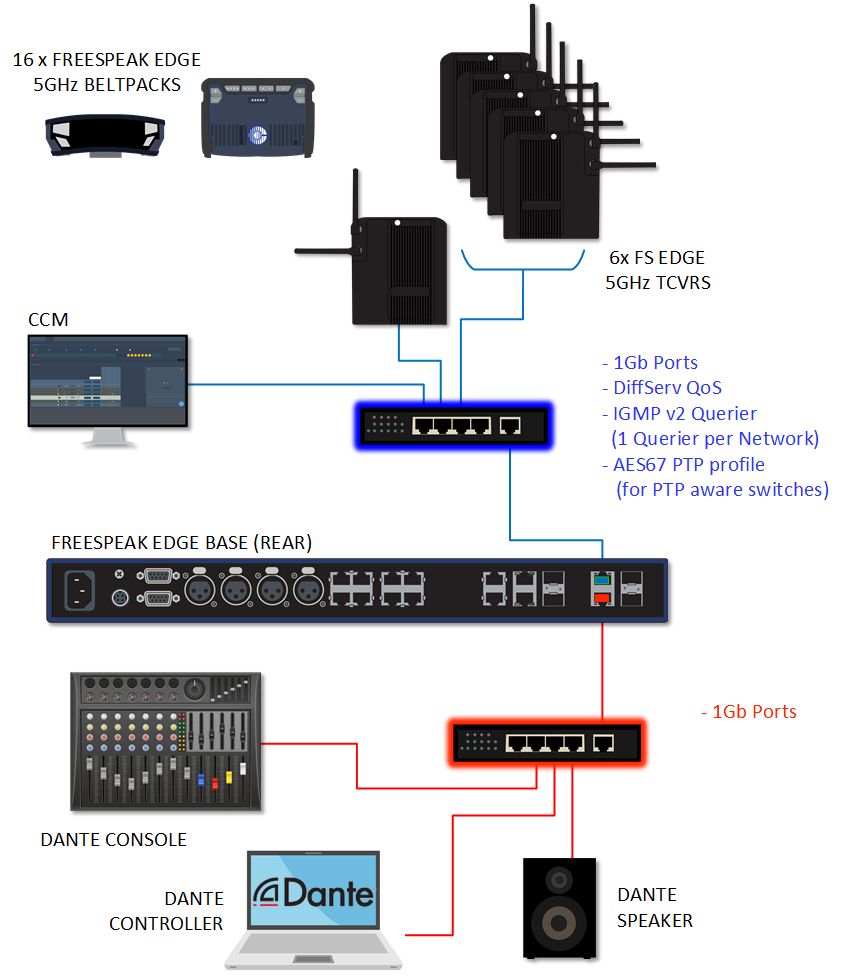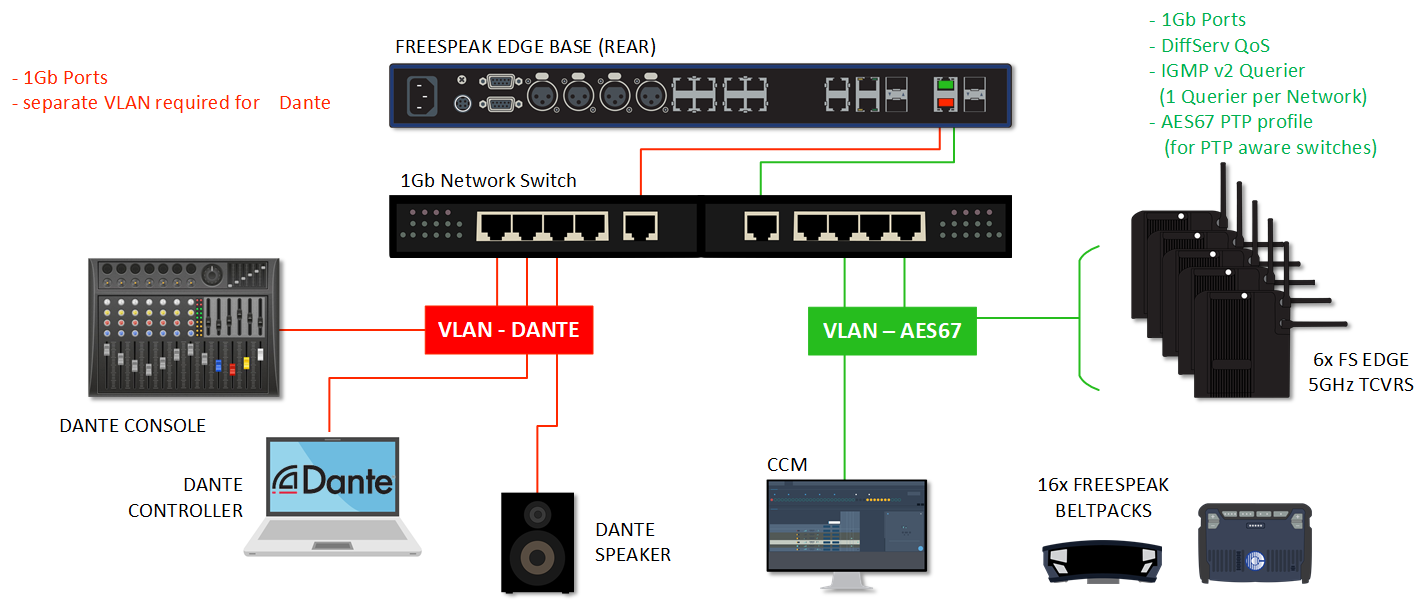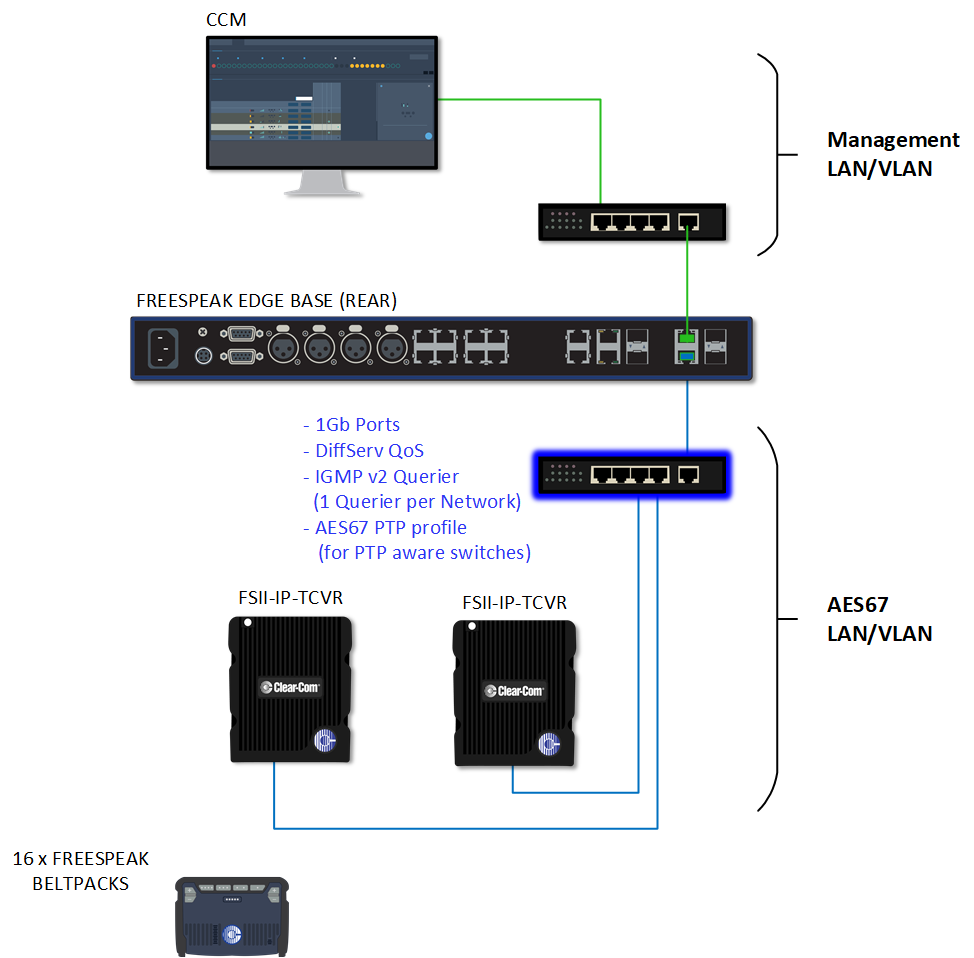Network Setup for IP Transceivers
The FreeSpeak Edge Base Station has LAN connections assignable to different network traffic such as Managment, AES67, Dante and so on.
The LAN ports are fully user configurable but you can work with the following default settings:
- LAN 1: Management
- LAN 2
- LAN 3: Not configured (SFP)
- LAN 4: Not configured (SFP)
 Connection to IP Transceivers, Example 1
Connection to IP Transceivers, Example 1
 Connection to IP Transceivers and Dante, Example 2
Connection to IP Transceivers and Dante, Example 2
 Connection to IP Transceivers and Dante, Example 3
Connection to IP Transceivers and Dante, Example 3
 Connection to IP Transceivers, Example 4
Connection to IP Transceivers, Example 4
Setup Rules
- The default setup, Management on LAN 1 and AES67 on LAN 2, allows your computer to be connected directly to the Base Station for configuration and a dedicated switch to LAN 2 for FreeSpeak IP transceivers. This is in order to accommodate the IP transceivers' need for high clocking accuracy. Too much traffic on your network will degrade the performance of your IP transceivers.
- For the AoIP network, try to keep the number of layer 2 hops between PTP leader and follower as low as possible (no more than 3). If more are required, consider using a Boundary Clock or a Transparent Clock.
- For more information on achieving a well-regulated PTP network and recommendations for suitable switches, see Clear-Com AoIP Network Recommendations available from the FreeSpeak II Knowledge Center.
- Use DHCP (the default setting) for fast and easy setup of the devices. If the device does not encounter a DHCP server on the network it will automatically allocate an address in the link-local range (169.254.xx.xx).
- IP addresses can be configured statically under Hardware > Resources > Network in the CCM.
- For information on the 5 GHz transceiver (status and connection indicators) see the Edge Transceiver Quick Start Guide available from the FreeSpeak Edge Knowledge Center.
- Connection status indicators on the FreeSpeak II IP transceiver are the same as the Edge transceiver (no channel scan).
- For PoE to the transceivers you will need a PoE enabled network switch.



